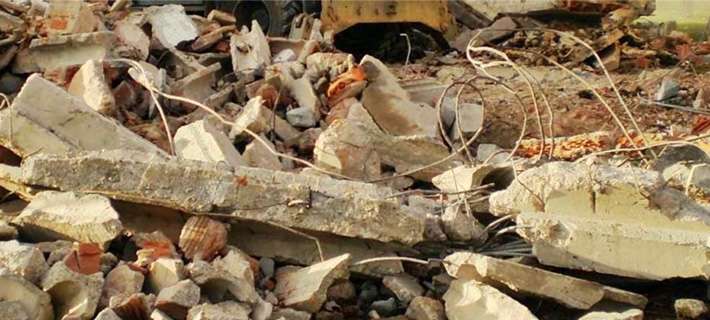Building material recycling – a great gain for the environment

Constructivate's aim is to increase the recycling of Sweden's second largest source of waste, building and demolition materials. Recycled concrete can become a great gain for the environment.
Construction and demolition waste is the second largest source of waste, after mining, in Sweden (30%), and when many concrete buildings that were built in the 1960s and 70s, the Million Programme, soon will be renovated the waste stream is expected to increase. But even though the amount of the waste is vast, only about half of the waste is recycled. The most common materials in the waste (soils and dredge spoils excluded) are wood, metal, plastics and concrete. As a recycled material concrete is most commonly used as fill material in road constructions.
In the project Constructivate, initiated by CCR (Competence Centre Recycling) with funding from the Mistra programme Cloosing the loop, the participants, including the CCR-members Chalmers University of Technology, Chalmers Industriteknik, Renova, Stena Recycling, NCC, SP, Swerea and IVL will increase the recycling rate and specifically aim for the types of materials that today are not seen as something worth to recycle.
Chalmers is represented by the division of Construction management at the Department of Civil and environmental engineering and the division of Energy and materials at the department of Chemistry and chemical engineering.
At Chemistry and chemical engineering Ulf Jäglid and Rikard Ylmén are exploring the possibilities in recycling concrete in a way that is sustainable, both economically and environmentally.
"We are investigating if it is possible to crush the concrete and find out how active it is. Normally there is around 10% of active components left in the demolition material that yet hasn't reacted with water and that be used once again as a cementing material," says Ulf Jäglid.
To get to this you have to remove stone and rebars from the concrete. Another possible way is to reverse the production process, and instead of mixing cement, water and ballast, which results in concrete, remove these materials from each other.
"That is the dream, to create such reversibility. That the process can be made both ways," says Ulf Jäglid.
A third way is to standardise the concrete in buildings, so that they, like pieces of Lego, can be put together in different constructions and taken apart. The most important thing, according to Ulf Jäglid, is that the method must be working on the market and thereby may be implemented.
One of the greater benefits you get from recycling concrete is that the CO2-emissions may be reduced, since much CO2 is produced in the making of new cement when calcium carbonate is burnt.
Sweden is world leading when it comes to research in concrete recycling and now when representatives from the whole value chain is involved in CONSTRUCTIVATE the knowledge exchange between academia and industry will strengthen this position. The project also contains an extensive life cycle analysis, which makes it more likely that the results will be used.
The roll of the chemists in the project is to contribute with knowledge at a molecular level. The art of building with concrete has been known for more than 2000 years, but what happens with the atoms and molecules is still relatively unknown. Now when the concrete is to be broken down as efficiently as possible, knowledge in chemistry is necessary.
"Without knowledge in concrete chemistry it is difficult to optimise the recycling. We will take the process a step further by explaining what actually happens. If we know what we have, we also know what to do to start a reaction. Concrete is a very complex material so if we don´t know what we have, then we can make tests for a hundred years without finding the right method," Ulf Jäglid says.
Provided by Chalmers University of Technology



















